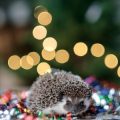Introduction to Hedgehogs and Sugar Gliders in the UK
In recent years, both hedgehogs and sugar gliders have become increasingly beloved among British exotic pet enthusiasts. Their charming personalities, unique behaviours, and compact size make them irresistible choices for those wishing to add a touch of the extraordinary to their homes. Across the UK, more people are embracing these delightful creatures, turning their living spaces into miniature havens for their new companions. However, before welcoming a hedgehog or sugar glider into your household, it’s essential to understand the legal landscape and ethical responsibilities associated with keeping such pets.
The UK government has clear regulations regarding the ownership of exotic animals, including hedgehogs and sugar gliders. It’s vital to ensure you source your pet from reputable breeders or rescue organisations that comply with local laws and welfare standards. Below is a brief overview of key considerations for prospective owners:
| Aspect | Hedgehogs | Sugar Gliders |
|---|---|---|
| Legal Status | Permitted with restrictions; African Pygmy Hedgehogs are popular | Permitted in England & Wales; check local authority guidelines |
| Ethical Sourcing | Licensed breeders or rescues only | Licensed breeders or rescues only |
| Welfare Requirements | Must meet Animal Welfare Act 2006 standards | Must meet Animal Welfare Act 2006 standards |
Caring for these enchanting animals involves more than simply providing food and shelter—it requires a genuine commitment to their wellbeing. Ethical pet ownership means considering their natural behaviours, social needs, and environmental enrichment, ensuring that your new family member thrives within your home.
2. Choosing the Perfect Location in Your British Home
Creating a nurturing environment for your hedgehog or sugar glider begins with selecting the right spot within your UK residence. Whether you live in a Victorian terrace, a contemporary flat, or a quaint cottage, the nuances of British homes—such as central heating, double-glazed windows, and variable natural light—should guide your decision. The location you choose will directly influence your pet’s comfort, health, and overall happiness.
Key Considerations for Habitat Placement
| Factor | Hedgehogs | Sugar Gliders |
|---|---|---|
| Temperature | Prefer stable temperatures (18-24°C); avoid draughty corridors or near radiators. | Enjoy warmth (22-27°C); keep away from chilly conservatories or unheated lofts. |
| Natural Light | Indirect sunlight is ideal; avoid direct sun from south-facing bay windows. | Dappled light mimics tree canopies; avoid constant artificial lighting. |
| Noise Levels | Peaceful corners work best; avoid high-traffic areas like kitchens or hallways. | Quiet bedrooms or studies are preferable; steer clear of TV rooms or utility spaces. |
| Humidity | Avoid damp cellars; opt for well-ventilated spots to prevent mould. | Stable humidity needed; refrain from placing cages near tumble dryers or bathrooms. |
Practical Tips for UK Homes and Flats
- Lounge Corners: Living rooms often offer moderate traffic and stable temperatures. Set up habitats away from fireplaces and radiators to prevent overheating during winter months.
- Bedrooms: These tend to be quieter and can provide a sanctuary for nocturnal pets like hedgehogs and sugar gliders. Ensure there’s enough airflow but no cold draughts from sash windows.
- Spare Rooms or Studies: Ideal if you want to give your exotic pets a private area with minimal disturbances—perfect for small flats where space is precious.
- Avoid Conservatories: British conservatories can become too hot in summer and too cold in winter, making them unsuitable for sensitive species.
Cultural Note: Embracing British Seasons
The ever-changing British climate means that room selection should account for both warm summers and chilly winters. Use thermal covers or ceramic heat emitters in colder months, but ensure good ventilation during warmer spells. Monitoring room conditions year-round ensures your little companions thrive in your uniquely British abode.

3. Essentials for a Cosy and Enriching Habitat
Creating a nurturing home for hedgehogs and sugar gliders in the UK means balancing comfort, enrichment, and safety—all tailored to each species’ unique needs. Here’s how you can curate a habitat that suits their lifestyles, using products readily available from British pet shops and trusted online retailers.
Hedgehog Habitat Setup
Recommended Enclosures
For African pygmy hedgehogs, opt for a spacious enclosure—ideally at least 120cm x 60cm—with good ventilation. Solid-sided plastic cages (like ZooZone or VivExotic brands), or custom-built vivariums, are popular in the UK. Avoid wire-bottomed cages as they can injure delicate feet.
Nesting Options & Substrate Choices
| Feature | UK-Available Options |
|---|---|
| Nesting Box | Wooden hideaways (Pets at Home), Snuggle Sacks (Etsy UK) |
| Bedding/Substrate | Aspen shavings (Amazon UK), Carefresh paper bedding (Pets Corner), Fleece liners (Homemade/Etsy) |
| Accessories | Ceramic food bowls, silent exercise wheels (Silent Spinner/Johnston & Jeff) |
Sugar Glider Habitat Setup
Recommended Enclosures
Sugar gliders thrive in tall, multi-level enclosures—minimum 90cm high—to encourage natural climbing behaviour. Powder-coated wire cages with bar spacing under 1.5cm are widely stocked by UK suppliers such as LittleZoo and Liberta. Vertical space allows you to add branches and ropes for enrichment.
Nesting Options & Substrate Choices
| Feature | UK-Available Options |
|---|---|
| Nest Pouches/Houses | Fleece pouches (Etsy UK), Wooden nest boxes (Northern Parrots) |
| Bedding/Substrate | Recycled paper pellets (Wilko), Non-toxic wood shavings (Pets at Home), Fleece cage liners (Custom orders) |
| Toys & Accessories | Coconut hides, climbing ropes, hanging foraging toys (Zooplus UK) |
Quick Tips for Cosy Living
- Avoid cedar and pine shavings—these are unsafe due to aromatic oils.
- Opt for easy-to-clean substrates to maintain hygiene and minimise odours.
- Add plenty of safe enrichment items: tunnels, hammocks, chew toys, and interactive feeders keep pets mentally stimulated.
- Always position habitats away from draughts and direct sunlight for stable temperatures—especially important in the UK’s variable climate.
With thoughtful choices tailored to British conditions and supply options, your hedgehog or sugar glider will enjoy a homely haven that supports both wellbeing and playful curiosity.
4. Temperature, Lighting, and Environmental Considerations
Maintaining the ideal environment for your hedgehog or sugar glider is crucial, especially with the unique quirks of British homes—think draughty Victorian terraces and unpredictable weather. Both species require warmth and stability, so understanding how to create a comfortable microclimate indoors will help them thrive.
Temperature: Creating Cosy Corners
Hedgehogs prefer ambient temperatures between 22–25°C, while sugar gliders are happiest at 24–28°C. British winters can cause home temperatures to dip below these ranges, so investing in a quality ceramic heat emitter or a thermostatically controlled heat mat is wise. Avoid using direct heat sources like hot water bottles or electric blankets inside enclosures as they can overheat or become unsafe.
Recommended Temperatures Table
| Pet | Daytime Temperature | Night-time Temperature |
|---|---|---|
| Hedgehog | 22–25°C | No lower than 20°C |
| Sugar Glider | 24–28°C | No lower than 22°C |
Lighting: Mimicking Natural Cycles
To support natural circadian rhythms, provide consistent light cycles—ideally 12 hours light/12 hours dark. In the UK, winter daylight is short; supplementing with an LED day lamp on a timer can prevent lethargy and stress. Never use bright lights overnight, as both pets are nocturnal and need darkness to feel safe and active.
Lighting Tips for British Homes
- Place enclosures away from direct sunlight to avoid overheating during rare hot spells.
- Use blackout blinds in rooms with streetlights to ensure complete darkness at night.
Draught-Proofing and Environmental Safety
Breeze-blocked homes may seem charmingly rustic but can pose real risks for exotic pets. Position habitats away from windows, doors, and radiators to shield against temperature fluctuations. Draught excluders and double glazing help maintain consistency, while soft fleece bedding offers extra insulation without risk of tangling or ingestion.
Quick Checklist: Keeping Cosy in the UK
- Monitor enclosure temperature daily with a digital thermometer.
- Add extra fleece hides or hammocks for chilly evenings.
- Avoid placing cages near open fireplaces or portable heaters.
By tailoring your setup to the British climate—with thoughtful heating, proper lighting, and attention to draughts—you’ll create a nurturing home where your hedgehog or sugar glider can flourish year-round.
5. Feeding and Wellness: British Brands and Local Resources
Ensuring the health and happiness of your hedgehog or sugar glider starts with a balanced diet and access to quality care. In the UK, pet owners are fortunate to have a selection of trusted brands and local resources that cater specifically to exotic pets. Here’s how you can provide top-notch nutrition and wellness for your prickly and gliding companions.
Top UK Pet Food Brands for Hedgehogs & Sugar Gliders
| Pet Type | Recommended Brands | Product Features | Where to Buy |
|---|---|---|---|
| Hedgehog | Spike’s World, Brambles, Ark Wildlife | High in protein, low in fat; includes essential vitamins; insect-based options | Pets at Home, Amazon UK, Local Pet Shops |
| Sugar Glider | Exotic Nutrition, Zoo Med, Repashy | Nectar blends, fruit-based mixes, calcium-fortified supplements | Exotic pet retailers, Online specialty stores |
Crafting a Balanced Menu Using Local Ingredients
The British countryside offers a variety of fresh produce ideal for supplementing commercial diets. For hedgehogs, consider adding chopped apples, cooked chicken (unseasoned), or mealworms available from reputable garden centres. Sugar gliders thrive on a mix of nectar replacements, fresh fruits like pears or blueberries, and specially formulated pellets.
Sample Weekly Diet Plan
| Day | Hedgehog Meal Ideas | Sugar Glider Meal Ideas |
|---|---|---|
| Monday | Spike’s Dinner + apple slices + dried mealworms | Nectar blend + grapes + Repashy pellets |
| Wednesday | Bramble’s Crunchy + cooked chicken + carrot bits | Zoo Med Fruit Mix + pear pieces + boiled egg white |
| Friday | Ark Wildlife Food + banana slices + live insects (from garden centre) | Fresh blueberries + Exotic Nutrition Glider Complete + honey water treat |
Connecting with Local Exotic Vets & Pet Communities in the UK
Your hedgehog or sugar glider deserves expert care. The Royal College of Veterinary Surgeons (RCVS) website helps you locate nearby exotic animal vets. Additionally, online communities such as the British Hedgehog Preservation Society and Sugar Glider Forums UK offer advice, meet-ups, and support from fellow enthusiasts.
A Few Trusted Resources:
- RCVS Find a Vet Tool: findavet.rcvs.org.uk/
- The British Hedgehog Preservation Society: britishhedgehogs.org.uk/
- Sugar Glider Forums UK: sugargliderforum.co.uk/
By choosing local products and connecting with the right professionals and fellow pet lovers, you’re not just feeding your pets—you’re nurturing their wellbeing within the heart of British pet culture.
6. Enrichment, Socialisation, and Safety in the British Home
Creating a vibrant and secure environment for your hedgehogs and sugar gliders is not only a matter of meeting their basic needs but also a way to cultivate joy and well-being within your British home. These enchanting companions thrive on mental stimulation, gentle socialisation, and spaces that cater to their natural instincts—all while ensuring safety from household hazards.
Ideas for Stimulating Indoor Play
Dedicate a quiet corner or even a repurposed alcove in your lounge as an ‘explore zone.’ For hedgehogs, tunnels crafted from recycled cardboard or commercially available PVC pipes encourage foraging and exercise. Sugar gliders delight in multi-level climbing structures—think natural wood branches (sourced from UK pet shops) or rope ladders designed for small pets. Rotate toys regularly to keep their curiosity piqued.
Recommended Toys & Accessories from UK Stores
| Pet | Toy/Accessory | Where to Buy (UK) |
|---|---|---|
| Hedgehog | Exercise wheel (solid surface), snuffle mat, hideaway igloo | Pets at Home, Zooplus UK |
| Sugar Glider | Foraging pouches, hanging coconut shells, fleece tunnels | Paws and Claws Online, Exotic Pets UK |
Home Accessories to Enhance Their Habitat
- Soft fleece bedding (washable and hypoallergenic)
- Ceramic food bowls (prevents tipping)
- Nontoxic plants such as spider plants or Boston ferns for visual enrichment
Safety Tips for the British Household
- Block off gaps under furniture with draught excluders or rolled towels—hedgehogs are notorious explorers!
- Secure electrical cords with cable protectors found at B&Q or Wilko.
- Avoid scented candles and plug-ins in pet areas; opt for reed diffusers with natural oils if fragrance is desired.
By blending thoughtful enrichment with quintessentially British design sensibilities—soft textures, calming colours, and clever space-saving solutions—you can create a home where both you and your exotic pets flourish together in comfort and style.
7. Routine Care, Cleaning, and Ethical Responsibility
Maintaining the well-being of hedgehogs and sugar gliders in your UK home is about more than habitat design—it’s a daily commitment to cleanliness, welfare, and ethical stewardship. Embracing practical routines helps nurture a harmonious relationship with your exotic companions while supporting Britain’s broader community of responsible pet owners.
Daily & Weekly Care Routines
A structured care routine ensures your pets thrive physically and emotionally. Below is a sample schedule tailored for UK households:
| Task | Frequency | UK-Specific Tips |
|---|---|---|
| Feeding & Water Refresh | Daily | Use fresh, filtered tap water; source food from reputable UK pet suppliers |
| Spot-clean Enclosure | Daily | Remove soiled bedding and uneaten food using compostable waste bags |
| Full Bedding Change | Weekly | Select dust-free, UK-produced substrate (e.g., paper-based bedding) |
| Toy & Accessory Sanitising | Weekly | Wash with pet-safe British cleaning products; rinse thoroughly |
Choosing the Right Cleaning Products
Selecting eco-friendly, non-toxic cleaning solutions supports both animal health and environmental values. Look for products certified by the RSPCA Assured, ECOCERT, or similar UK organisations. Avoid harsh chemicals and always follow label instructions to protect sensitive noses and paws.
Caring for Your Community
Responsible ownership extends beyond your own home. Engage with local exotic pet groups, share tips on welfare, and advocate for high standards in care. Support British charities working towards animal protection, and consider rehoming rather than purchasing when expanding your family.
The Heart of Ethical Stewardship
Nurturing hedgehogs and sugar gliders is not just about meeting their basic needs—it’s about cultivating a compassionate mindset. Respect their natural behaviours, provide enrichment, and ensure veterinary visits with an exotics-specialist vet registered in the UK. By modelling conscientious practices, you help foster a kinder, more informed pet community across Britain.


